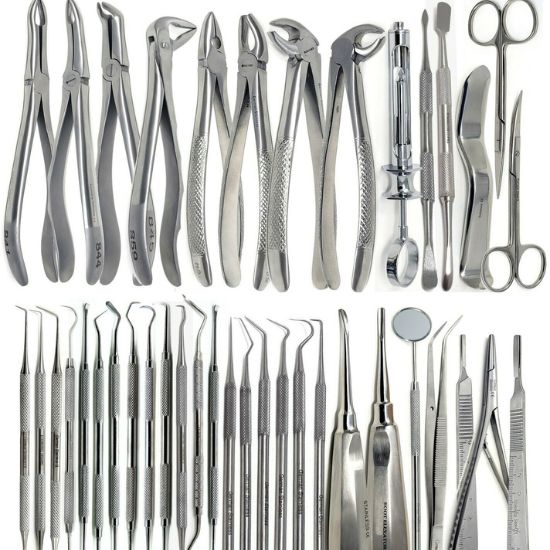Introduction:
Dentistry is a complex field requiring precision and expertise. At the core of this precision are the dental instruments that dentists use to diagnose, treat, and perform various procedures related to oral health. Understanding the different types of dental instruments is crucial not only for professionals but also for patients to become more inform about the treatments they undergo. This comprehensive guide will cover the essential dental instruments use in modern dental practices, their functions, and the significance of each in promoting optimal oral health.
Dental Mirrors:
A Closer Look Inside Your Mouth. A dental mirror is one of the most commonly recognize dental instruments. It serves a critical role in dental examinations, allowing dentists to view hard-to-see areas within the mouth. The small, angled mirror attach to a handle helps dentists examine teeth and gums for signs of decay, gum disease, or other dental issues. It also aids in checking the backside of teeth and helps in performing precise treatments.
Dental Probes:
The Explorers of Oral Health. Dental probes are another vital tool in a dentist’s arsenal. The most frequently use dental probes are the periodontal probe and the dental explorer. The periodontal probe is use to measure the depth of gum pockets to assess the health of the periodontium and screen for gum disease. On the other hand, dental explorers, with their sharp points, help in detecting breaks or cavities in the tooth enamel, providing early detection of potential problems.
Extracting Forceps:
For Safe and Effective Tooth Removal. Tooth extraction requires precision and care, which is facilitate by using the right type of extracting forceps. These tools are design to fit around the tooth, allowing dentists to grip it securely . Each type of forceps is tailor for different teeth, making the process as smooth and pain-free as possible.
Dental Scalers and Curettes:
Guardians Against Gum Disease. Scaling and root planing are procedures use to clean the surfaces of the teeth and their roots, which may be expose due to gum recession. Dental scalers and curettes are specialize instruments used in these procedures. Scalers have pointed ends to remove plaque and tartar from the teeth, whereas curettes are slightly more round and are use to smooth the root surfaces and remove any remaining tartar. Regular use of these tools is crucial in preventing periodontal disease.
Dental Drills:
High Precision in Cavity Treatment and Tooth Preparation. Dental drills are perhaps the most infamous of dental tools, primarily due to the sound they produce. However, they are indispensable in a variety of dental procedures, including cavity filling and cosmetic modifications. Modern dental drills can rotate at up to 400,000 rpm, allowing dentists to remove decayed tissue quickly and prepare the tooth for treatments such as fillings or crowns.
Dental Syringes:
Ensuring Comfort with Anesthesia. A dental syringe is use to administer local anesthetics, making dental procedures more comfortable for patients. These syringes are design specifically for dental use, with features that allow for precise administration of the anesthetic agent to a target area.
Dental Elevators:
The Leverage for Tooth Extraction. Dental elevators are use in tooth extraction, working alongside forceps to loosen the tooth from its socket. This instrument is particularly useful in cases where a tooth may be impact or firmly anchor in its place. By applying control force, the dentist can gradually elevate the tooth for easier extraction.
Impression Trays:
Capturing the Exact Contours of the Mouth. Impression trays are use to obtain an exact replica of a patient’s teeth and gums, which is essential for creating crowns, bridges, dentures, and other dental prosthetics. These trays hold the impression material that molds to the teeth and gums, ensuring that any device created fits perfectly and comfortably.
Autoclaves:
Ensuring Sterilization and Patient Safety. Sterilization of dental instruments is critical to prevent the transmission of infections. Autoclaves use steam at high pressures and temperatures to sterilize tools effectively, ensuring that they are safe for use in subsequent procedures.
Conclusion:
Understanding the various dental instruments. their uses is essential for anyone involve in dental care, from professionals to patients. These tools are fundamental in providing effective treatment and ensuring the best outcomes for oral health. As dental technology advances. the evolution of these instruments continues, further enhancing their efficacy and the comfort of dental procedures.

